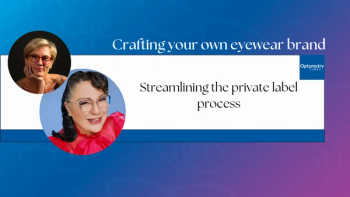
AAOpt 2024: Current concepts in pachychoroid spectrum diseases
Sherrol Reynolds, OD, FAAO, said that multimodel imaging has been a game changer in assessing the choroidal function and structural changes in various disease conditions.
Sherrol Reynolds, OD, FAAO, shares an overview of her American Academy of Optometry meeting presentation "Current Concepts in Pachychoroid Spectrum Diseases."
Video transcript:
Editor's note: The below transcript has been lightly edited for clarity.
My name is Dr Sherrol Reynolds, and I am a professor of optometry at Nova Southeastern University's College of Optometry in Fort Lauderdale, Florida. And thank you so much for having me to discuss my lecture at Academy 2024 on the current concepts in pachychoroid spectrum diseases. What's really important about understanding the choroid is that we have different ways now, multimodal imaging, to assess the choroidal function and structural changes in various disease condition. In patients with age-related macula degeneration, the choroid tend to be thinner than average, and in patients with certain conditions that are part of the pachychoroid spectrum of diseases, the choroid is thickened. In fact, the very term pachy means "thickened." And typically the number is greater than 320 microns. And using multimodal imaging that includes enhanced depth imaging, or EDI imaging, that penetrates a little bit deeper, this is an OCT testing can help us assess for pachychoroid. The disease spectrum has evolved and continues to evolve, and it includes central serous chorioretinopathy. It includes pachychoroid pigment epitheliopathy, or PPE. It includes pachychoroid neovasculopathy, or PNV, as well as polypoidal choroidal vasculopathy. We have peripapillary pachychoroid syndrome, as well as peripapillary pachychoroid neovasculopathy, as well as focal choroidal excavation and peripheral exudative hemorrhagic chorioretinopathy, or PEHCR, and what's new to the spectrum is adult vitelliform pachychoroid. So the disease conditions within this spectrum of diseases continues to evolve. So what's really important for clinicians to note is to incorporate enhanced depth imaging, or EDI imaging, when you see patients with any of these disease conditions to assess for a thickened choroid.
Newsletter
Want more insights like this? Subscribe to Optometry Times and get clinical pearls and practice tips delivered straight to your inbox.













































.png)


